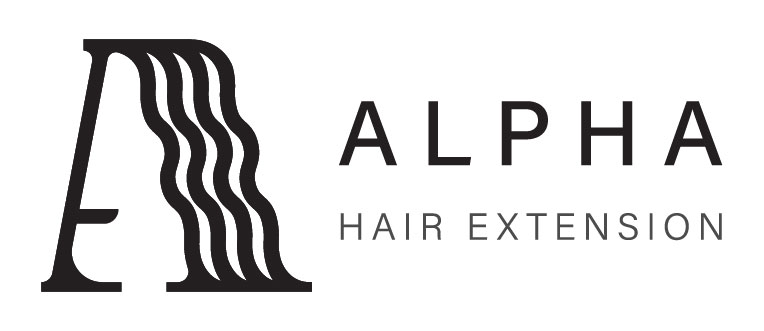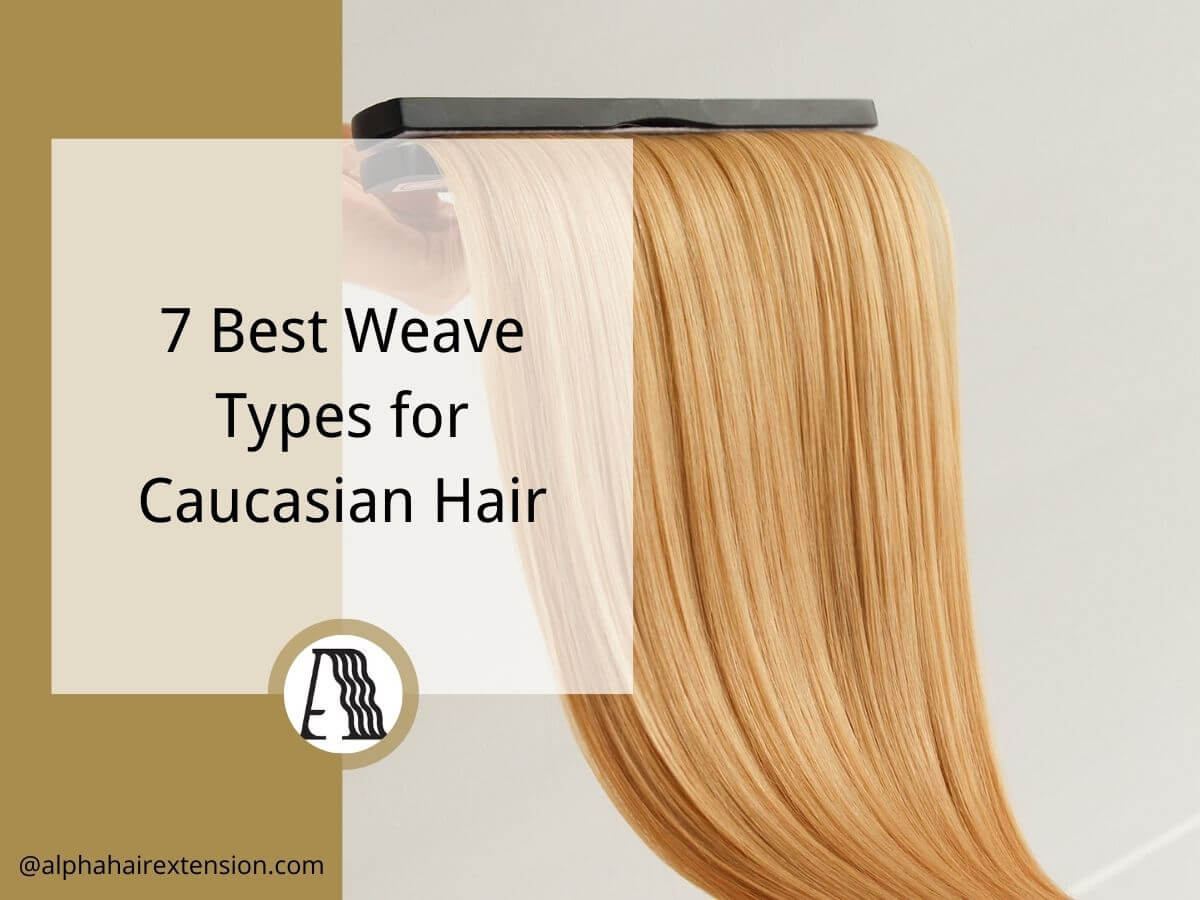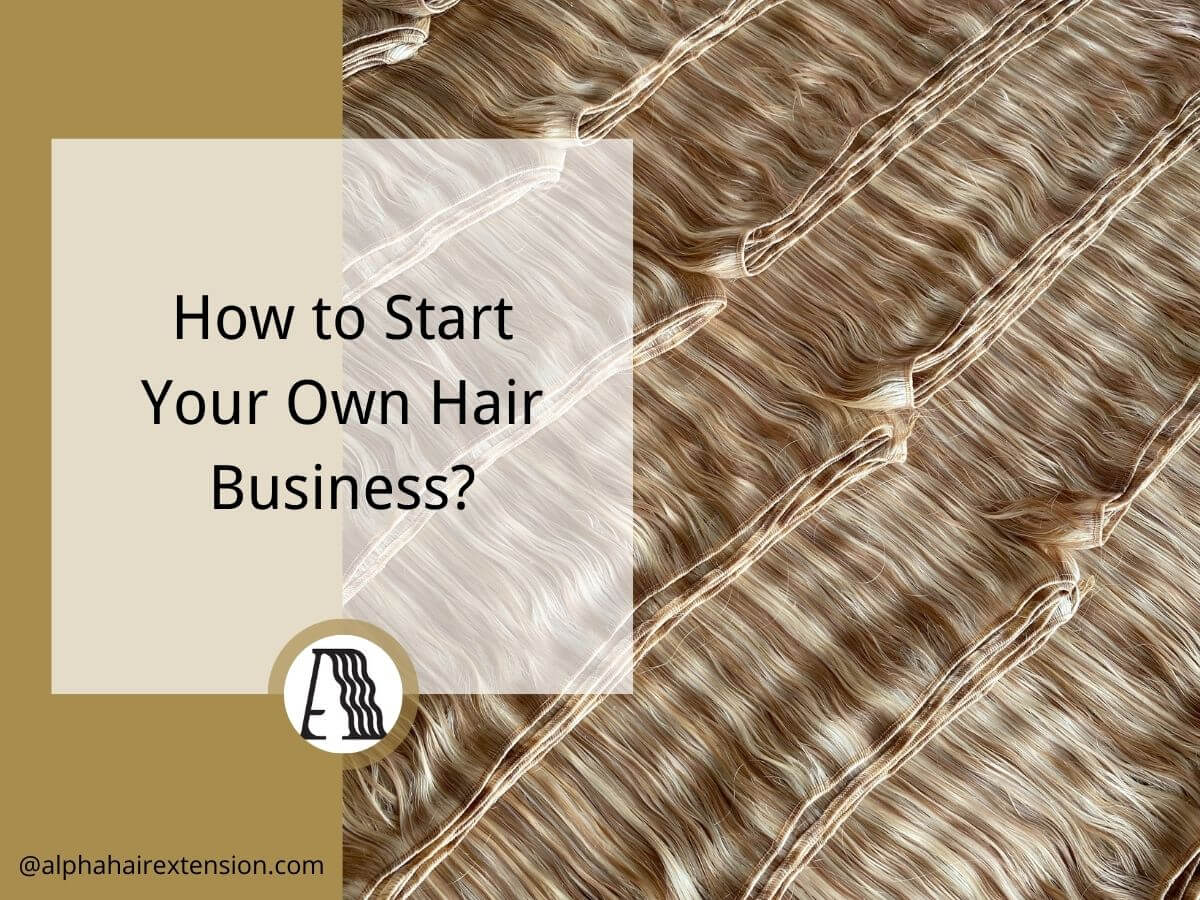A supplier once told me, “Hair weave and extensions are the same thing.” I knew that wasn’t true, but many businesses make this mistake. It leads to frustrated customers and lost sales.
The terms may seem similar, but they refer to different products. If you sell or distribute hair products, you need to understand the difference.
I’ve worked with suppliers, distributors, and retailers in the hair industry. I know how these products are made, sold, and used.
In this article, we’ll break down the key differences between hair weave and extensions, covering durability, cost, application methods, and maintenance.
By the end, you’ll be able to confidently match clients with the best option for their needs.
So let’s get started.
1. What is Hair Weave
A hair weave is a method of adding hair extensions by sewing or gluing them onto natural hair. It creates length, volume, and versatility in styling. Many people choose weaves to protect their natural hair while trying new looks.
I’ve watched the process many times. It starts with braiding the natural hair into cornrows. Then, using a needle and thread, the weave is carefully sewn onto the braids. Some people opt for glue instead, bonding the tracks directly to the scalp, though this method is less common.
Key Features of a Hair Weave
- Installation Method: Typically sewn onto cornrows or braided hair using thread. Some weaves use glue for attachment.
- Hair Type Used: Can be made of human hair, synthetic hair, or a blend of both.
- Longevity: Lasts 6-8 weeks with proper care.
- Maintenance: Requires regular washing and moisturizing of both the weave and natural hair underneath.
- Styling Options: Comes in various textures and styles, but cannot be removed daily like clip-in extensions.
Types of Hair Weave
Every time I help businesses stock hair products, I remind them—not all weaves are the same. Customers have different needs, and choosing the right type matters.Here are some types:
Sew-In Weave
A sew-in weave is installed by braiding the natural hair into cornrows and sewing the weave onto the braids using a needle and thread. It provides a secure, long-lasting style that lasts 6-8 weeks with proper care. This method is best for thick hair that can hold braids without tension damage.
Glue-In Weave
This method uses special hair glue to attach tracks directly to the scalp or hair. It offers a quick and affordable option but lasts only 2-4 weeks. Proper removal is crucial to prevent hair damage from the adhesive.
Quick Weave
A quick weave involves bonding weave tracks onto a wig cap placed over natural hair, creating a temporary, protective style. It is easy to install and remove but requires careful handling to avoid glue damage. This is a great option for those looking for a short-term hairstyle change.
Lace Front Weave
This weave includes a lace frontal that creates a natural-looking hairline, allowing for versatile parting and styling. It can be sewn or glued down and typically requires regular maintenance to keep the lace intact. It’s ideal for those wanting a realistic, seamless blend.
Pros and Cons of Hair Weave for Business Owners
Pros:
- Higher Profit Margins – Premium human hair weaves sell for a higher price.
- Repeat Customers – Clients return every few weeks for maintenance.
- Ideal for Salon Upselling – Weaves often require styling, cutting, and maintenance services.
Cons:
- Higher Upfront Cost – Quality human hair weaves are expensive to stock.
- Potential Customer Complaints – If not maintained well, weaves can tangle or shed, leading to returns or refunds.
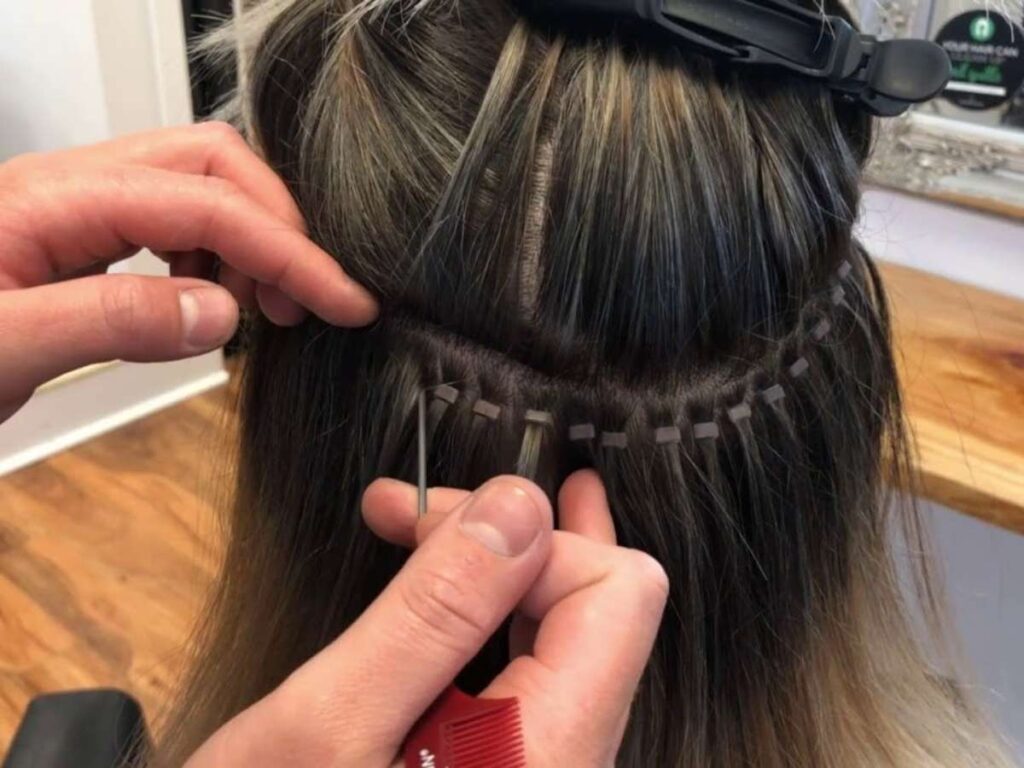
2. What Is a Hair Extension?
A hair extension is a way to add length, volume, or thickness to natural hair without long-term commitment. Unlike weaves, extensions come in different application methods, making them a flexible choice for a wide range of customers. Some are temporary and can be removed daily, while others are semi-permanent and require professional installation.
Key Features of Hair Extensions
- Installation Method: Attached using clips, tape, glue, or micro-links, depending on the type.
- Hair Type Used: Available in human hair, synthetic hair, or a blend of both.
- Longevity: Can last from one day (clip-ins) to several months (tape-ins, fusion, or micro-links).
- Maintenance: Requires gentle washing, detangling, and heat protection to extend lifespan.
- Styling Options: Offers flexibility in length, color, and volume, with some being reusable.
Types of Hair Extensions
I’ve seen firsthand that not all extensions work for every customer. Some want a quick fix, while others need a long-term solution. Stocking the right types ensures you meet different customer needs. Here are the common types:
Clip-In Extensions
Clip-in extensions come in wefts with small clips attached, allowing easy installation and removal. They are a great temporary option for adding length and volume in minutes. Since they don’t require glue or heat, they cause minimal damage to natural hair.
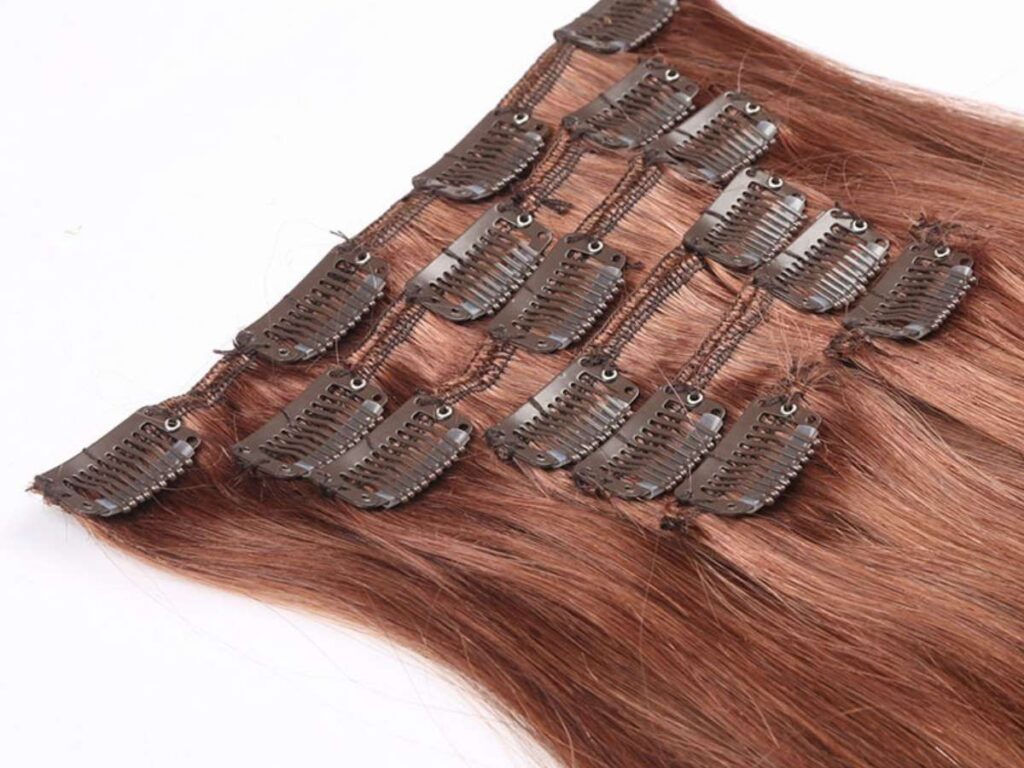
Tape-In Extensions
These extensions are attached using thin, adhesive strips that stick to natural hair. They lay flat against the scalp, making them blend naturally. Tape-in extensions last about 4-6 weeks and require professional application and removal to avoid damage.
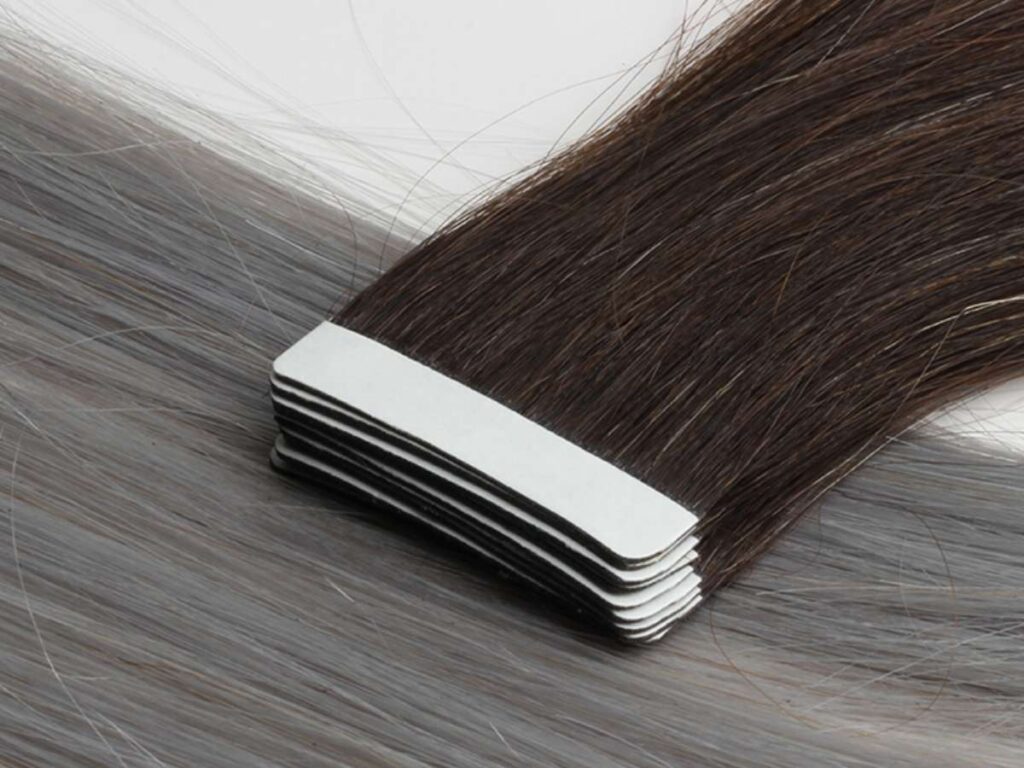
Fusion (Bonded) Extensions
Fusion extensions use keratin glue and heat to bond small hair strands to natural hair. This method creates a natural look and lasts up to 4 months. However, it requires professional installation and careful maintenance to prevent hair breakage.
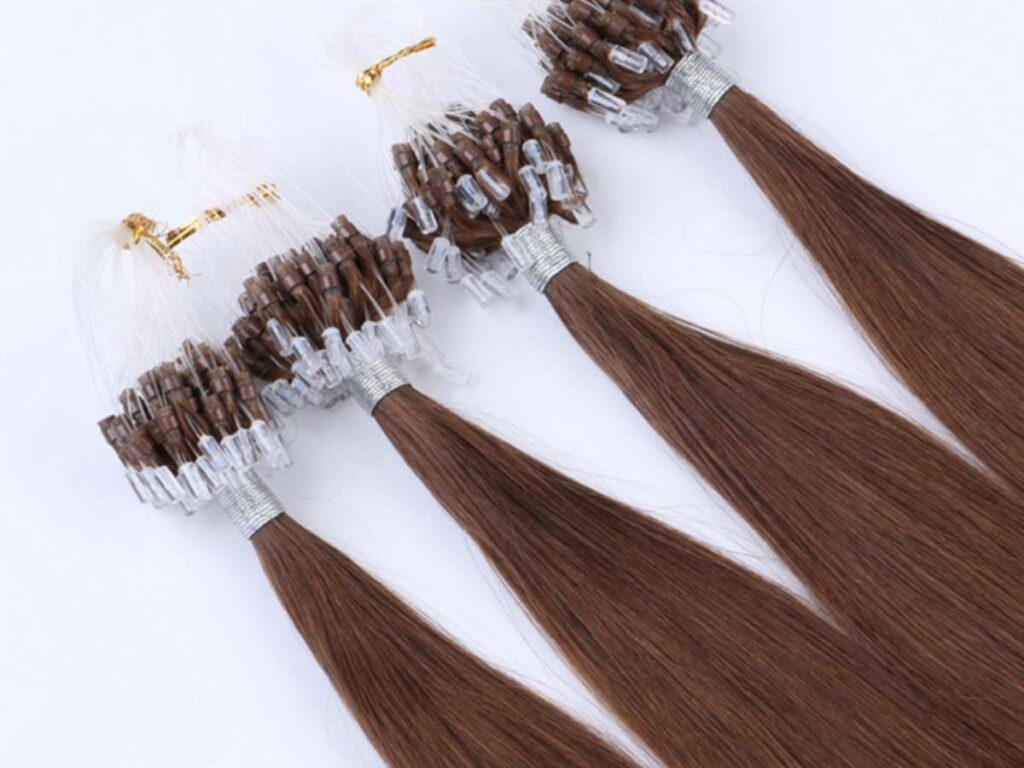
Sew-In Extensions
Also known as a weave, these extensions are sewn onto braided hair using a needle and thread. They provide a long-lasting, secure style but require professional installation. This method works best for thick or coarse hair.
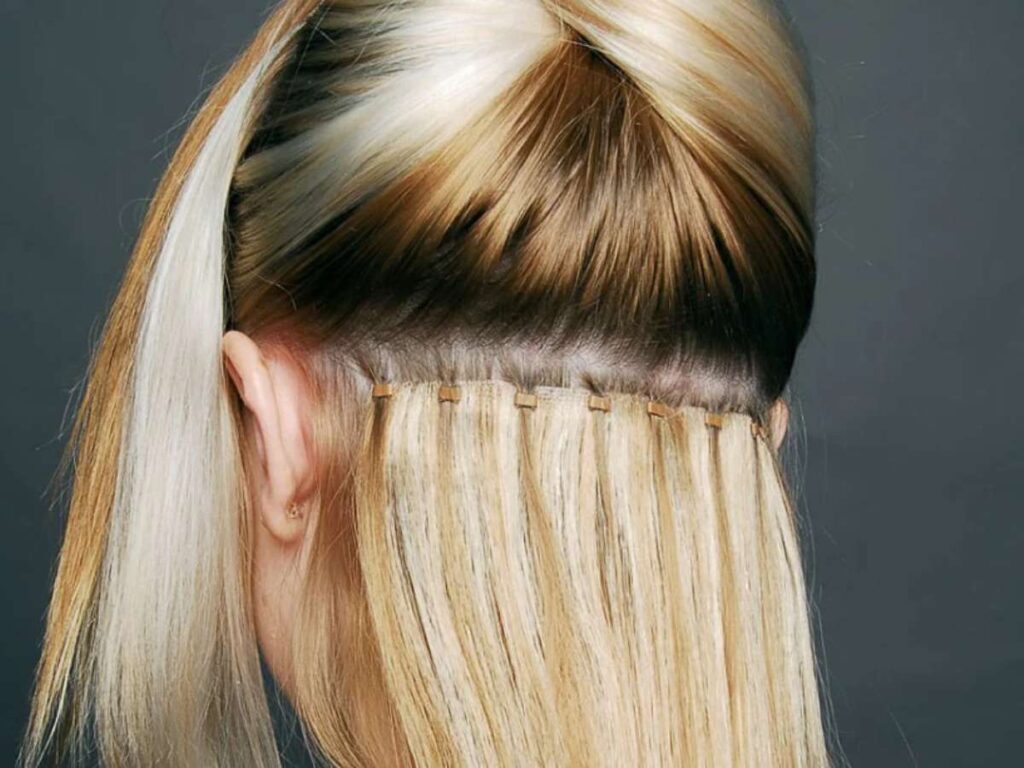
Pros and Cons of Hair Extensions for Business Owners
Pros:
- Broad Customer Appeal – Both salons and retail customers buy extensions.
- Lower Inventory Costs – Clip-ins and tape-ins are cheaper to stock than weaves.
- Fast Turnover – Extensions sell quickly because they’re easy to apply and remove.
Cons:
- Lower Profit Margins – Synthetic options are affordable but don’t generate as much revenue.
- Shorter Wear Time – Customers may return for frequent replacements.
- More Competition – Many online stores sell extensions at low prices, affecting pricing strategies.
3. Key Differences Between Hair Weave and Extensions
Now that we know what hair weaves and extensions are, it’s important to understand how they differ in a deeper level. Here’s a quick comparison to help you choose the best option for your client hair needs:
| Category | Hair Weave | Hair Extensions |
| Installation Process | Sewn or glued onto braided natural hair, requires a stylist | Applied using clips, tape, keratin bonds, or micro-links |
| Wear Duration | Lasts 6-8 weeks with proper care | Varies by type: clip-ins last a day, tape-ins last weeks |
| Customer Preference | Preferred by customers looking for long-term wear and volume | Popular among customers who want temporary or flexible styling |
| Maintenance Requirement | Requires regular maintenance and salon visits | Lower maintenance, easier to apply and remove |
| Target Market | Mainly sold to salons and professionals | Appeals to salons, online retailers, and at-home users |
| Profitability for Businesses | Higher profit margins but requires skilled application | Lower profit margins but high turnover and repeat sales |
| Stocking Considerations | Higher upfront investment, slower turnover but steady demand | Lower inventory cost, quick sales, but high competition |
| Upfront Cost | Higher due to quality human hair and professional application | Lower, especially for synthetic and clip-in options |
| Application Time | Takes longer (2-6 hours) due to braiding and sewing process | Faster (minutes to an hour) depending on type |
| Competition Level | Lower competition due to required skill in application | High competition, especially online and in retail stores |
| Return & Exchange Rate | Lower return rate, as customers know what they are buying | Higher return rate, especially for color and texture mismatches |
4. Tips for Choosing The Right One For Your Needs
Many business owners struggled to decide between hair weaves and extensions. Some stocked the wrong product and saw it sit on shelves for months. Others underestimated demand and ran out too soon. Making the right choice comes down to knowing your market and understanding your customers’ needs.
Here are a few key tips to help you decide:
Tip #1: Identify Your Target Customers
Always ask business owners, “Who are you selling to?” If your main customers are salons and stylists, weaves are a solid investment because they require professional installation and maintenance. On the other hand, if you’re in retail or e-commerce, hair extensions are a better fit—they attract a wider audience looking for quick, temporary solutions that they can apply themselves.
Tip #2: Consider Maintenance and Longevity
Not every customer wants the same level of commitment. Weaves last longer but require regular maintenance and salon visits, making them perfect for customers looking for semi-permanent styles. Extensions offer more flexibility, requiring less upkeep and giving customers the option to switch looks more often. If your customers want convenience, extensions are the way to go.
Tip #3: Evaluate Your Stocking and Investment Costs
Hair weaves generally require a higher upfront investment but can yield higher profits in salons due to premium pricing. Hair extensions, especially synthetic ones, are more affordable to stock and sell quickly, but margins may be lower. Consider your budget and how fast you want to turn over inventory.
Tip #4: Think About Customer Loyalty
Weave customers often return for maintenance and reinstallations, creating repeat business for salons. Extensions are more of a one-time purchase unless you offer exclusive quality or bundle deals. If long-term customer retention is a priority, weaves may be the better option.
Conclusion
Hair weaves or extensions? You now have the facts. You know the differences, the pros, the challenges, and the best use cases.
Your next step? Turn this knowledge into profit. Sell the right products. Stock what your customers actually want.
I’ve seen businesses transform just by making this one smart choice. Now, it’s your turn.
What will you do with this insight?
Let’s get your business on the right track—contact us today!
Discover More Options
Want to see more products? We’ve got plenty of options that might just be the perfect fit for you:
Still haven’t found what you’re looking for? Don’t hesitate to contact us. We’re available around the clock to assist you.
